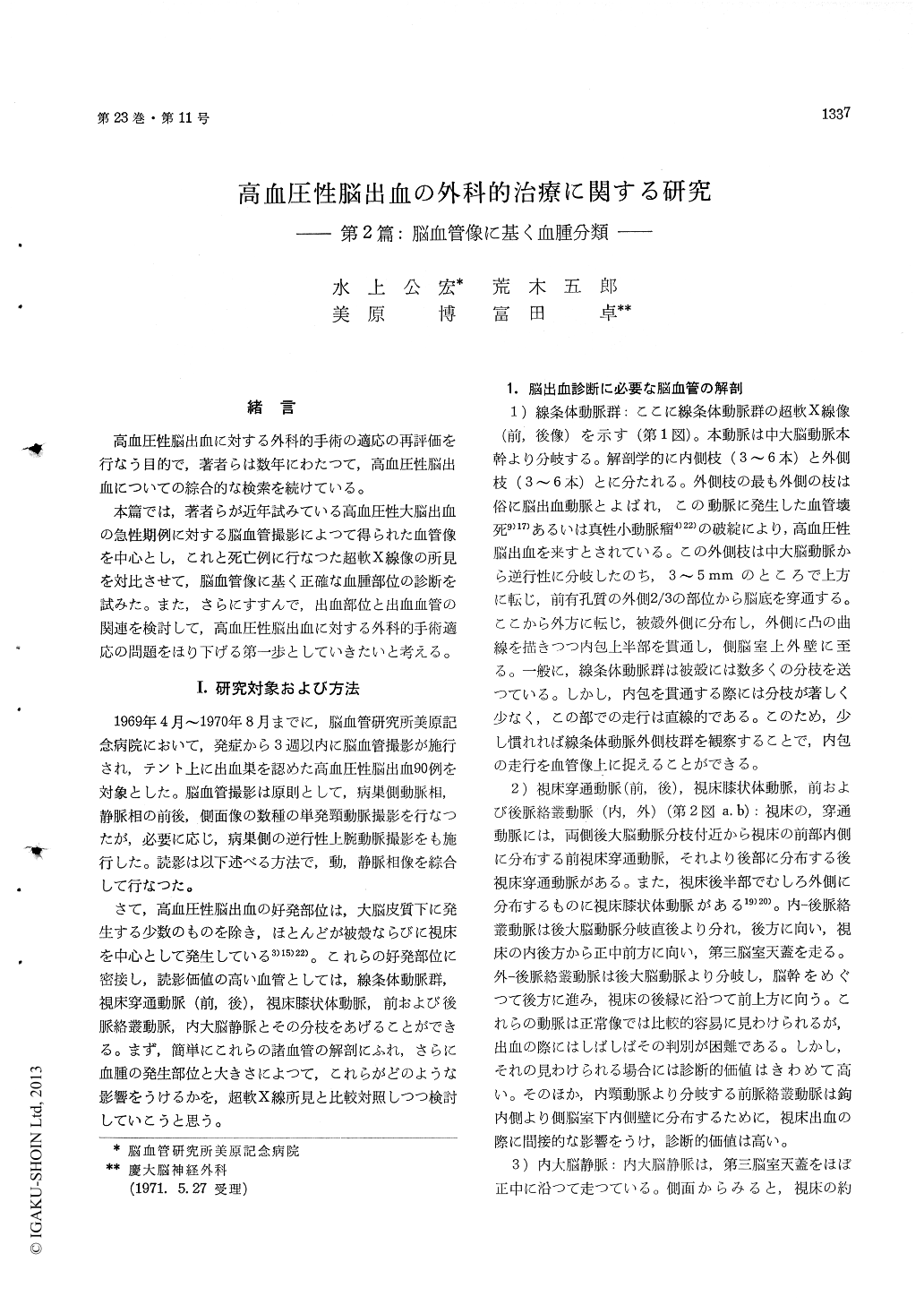Japanese
English
- 有料閲覧
- Abstract 文献概要
- 1ページ目 Look Inside
緒言
高血圧性脳出血に対する外科的手術の適応の再評価を行なう目的で,著者らは数年にわたつて,高血圧性脳出血についての綜合的な検索を続けている。
本篇では,著者らが近年試みている高血圧性大脳出血の急性期例に対する脳血管撮影によつて得られた血管像を中心とし,これと死亡例に行なつた超軟X線像の所見を対比させて,脳血管像に基く正確な血腫部位の診断を試みた。また,さらにすすんで,出血部位と出血血管の関連を検討して,高血圧性脳出血に対する外科的手術適応の問題をほり下げる第一歩としていきたいと考える。
We have analized the angiographic findings in 90 cases of hypertensive intracerebral hemorrhageand proposed the angiographic classification for the selection of patients for operation, In 48 cases angiographic evaluations were correlated with surgiccal and/or postmortem mircroangiographic findings.
1. Angiographically, the site of typical hyper-tensive intracerebral hemorrhage can be divided into those involving the putamen, the thalamus, and the lobar white matter.
2. Microangiographic examination revealed that bleeding resulted from rupture of a single artery and lead to formation of massive hematoma dissect-ing the bundle of nerve fibers. Moreover, the vessels responsible for the initial bleeding were confirmed to be one of the lateral lenticulostriate arteries, the thalamogeniculate arteries, and the subcortical arteries respectively.
3. The many classifications of hypertensive intra-cerebral hemorrhage based on location and size of hematoma have been reported. Our study, how-ever, clarified that these classifications are differences in the mode of extension from above initial bleed-ing regions. Accordingly we were able to subdivide them into several types for clinical applications.
4. Since bleeding from a single ruptured artery plays a major role in the formation of the massive hematoma, it seems to be unreasonable to discard the need for surgical cessetion of bleeding and evacuation of hematoma.

Copyright © 1971, Igaku-Shoin Ltd. All rights reserved.


